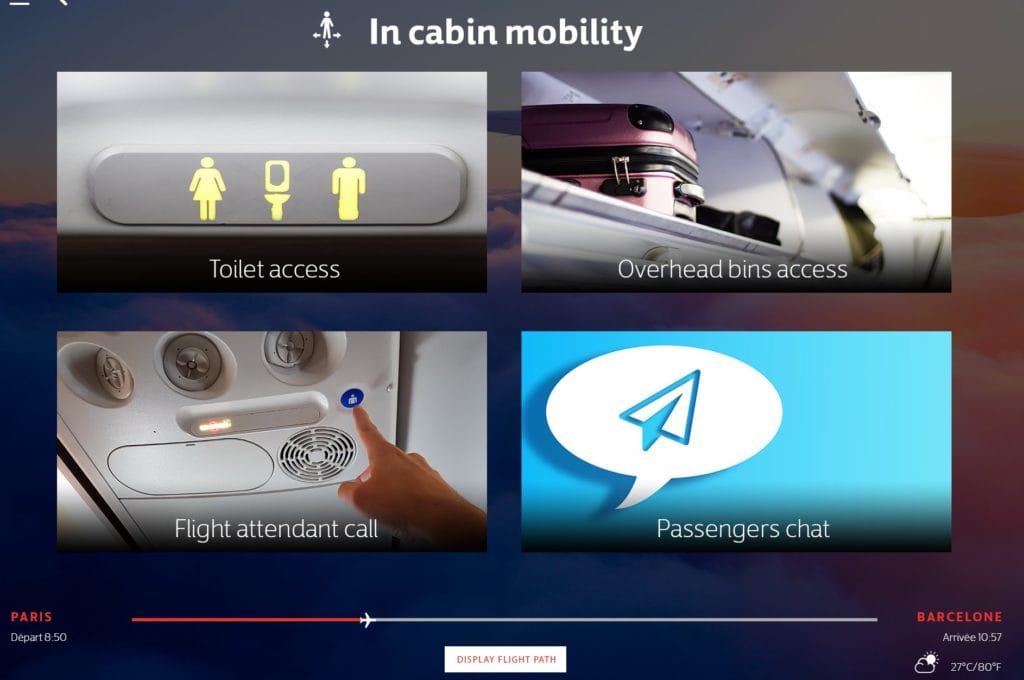PXCom’s IC2M Software Enables In-Flight Social Distancing
Share

PXCom’s newly launched In-Cabin Mobility Management (IC2M) software suite has been developed to organize movement around the cabin and reduce lavatory queues as passenger numbers increase.
Born out of the effects of the ongoing COVID-19 pandemic, PXCom’s new IC2M software suite consists of four modules aimed at reducing in-flight crowding. The modules address toilet queue management, access to overhead bins, the disembarkation process, and passenger-to-passenger and passenger-to-crew communications.
“We anticipate a 60% drop in unmanaged in-cabin movement.” – Cyril Jean, PXCom CEO
Should a passenger need to access the lavatory or overhead bins, PXCom’s software allows them to log a request through the in-flight entertainment (IFE) portal. “When they are next in line, a pop-up display asks if the request is still pending. If yes, a new pop-up invites them to access the toilets/bins when it’s their turn,” explained Cyril Jean, PXCom CEO. The pop-up display for lavatory access is triggered by the status of the passenger’s nearest toilets – occupied or vacant.
The disembarkation process will vary according to the rules set by each airline, but cabin crew will be able to use their devices to select specific groups to deplane, who will also receive a notification via pop-up display through the IFE system.
“As for the passenger-to-crew chat, the aim is to replace the attendant call button. The passenger can be offered pre-registered requests defined by the airline; an “attendant call” button, which replaces the traditional overhead system; or free chat. The cabin crew are then notified on their devices.” While Jean acknowledges that passenger-to-passenger chat is not a new invention, he believes that a reduction in cabin circulation will increase the value of the offering.

“Our customers are really excited about these capabilities, as we anticipate a 60% drop in unmanaged in-cabin movement,” explained Cyril Jean, PXCom’s CEO. “Of course, all these digital services are fully customizable in order to integrate each of our customer’s management rules to maintain consistency with its product experience.”
“Combined with our TravelWell offering, we are currently preparing a specific component to enable passenger idling in the aisles on long-haul flights, as they also need to stretch their legs,” Jean added.
PXCom has also created a digital safety and hygiene card to complement its existing interactive digital offerings, including in-flight magazines, menu cards and onboard shopping catalogues.
When a passenger first connects to the airline IFE, they will be presented with a swipeable safety and hygiene card in their chosen language, which is customized to the aircraft they are flying on. Once they’ve swiped through the content, they will be asked to acknowledge the information they’ve seen, and will then be redirected to the IFE homepage or the specific hygiene measures at their destination airport. The content of the card is managed from the cloud and can be updated whenever hygiene and safety guidelines evolve.

Jean confirmed that one airline has already integrated PXCom’s digital safety and hygiene card into its wireless IFE platform, and will be announced once it resumes passenger operations with the equipped aircraft. “We are committed to supporting our airline customers in these tough times. The standard digitized safety and hygiene cards do not involve recurring fees, and we’ve made sure that the price for this component is a no-brainer for our customers,” stated Jean.
According to Jean, the solutions can be rolled out on a wireless IFE system within four to six weeks, with seatback IFE integration taking a little longer.


